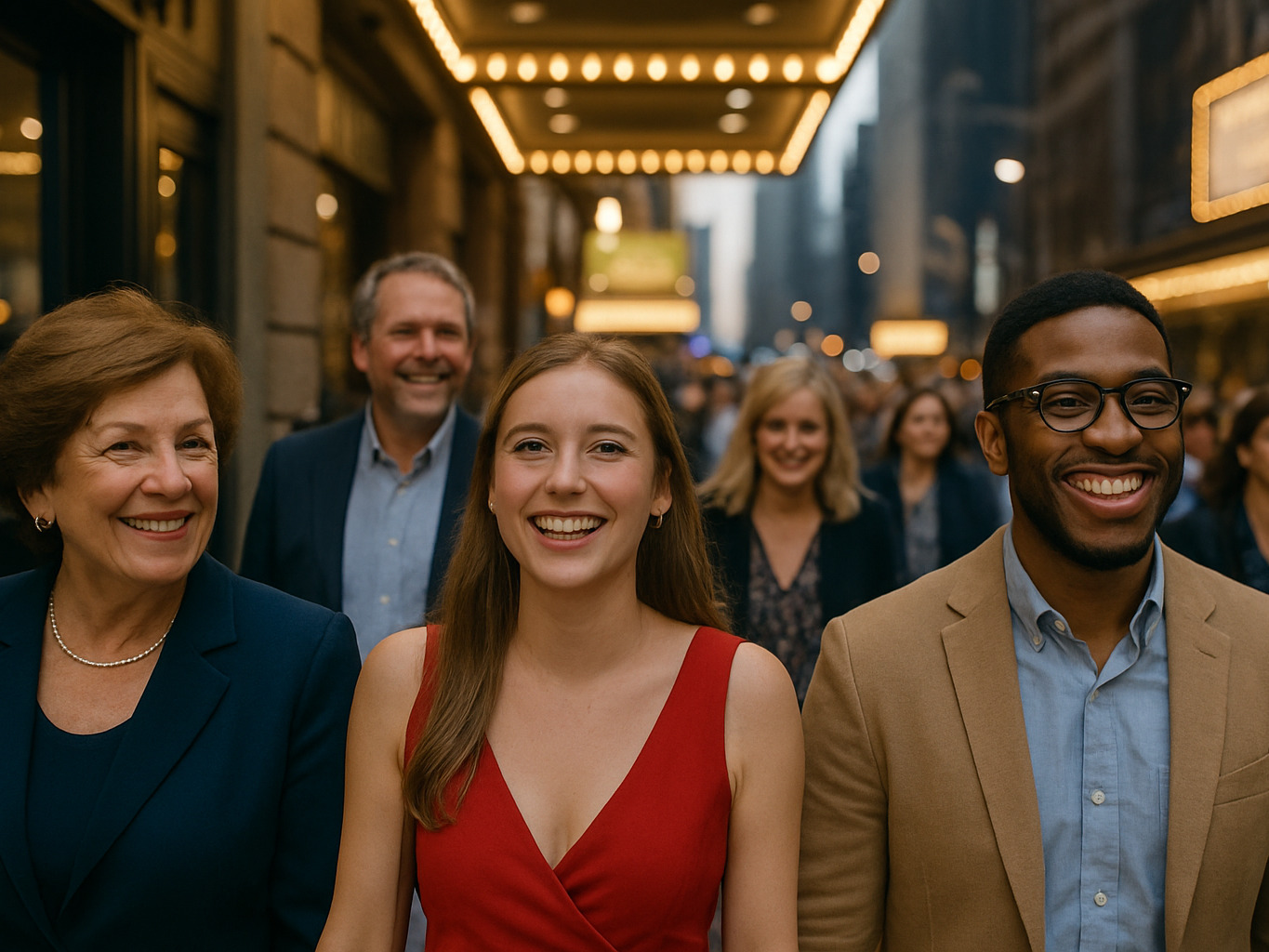Broadway Trends: The Rise of Immersive Theatre
By Broadwaytrax Content Studio · September 24, 2025
Updated September 24, 2025
Immersive theatre is transforming Broadway into a dynamic experience where the environment plays an integral role in storytelling. The usher becomes a host, the lobby resonates with club-like energy, and seating arrangements range from banquettes to standing areas. This innovative approach places the audience within the narrative, engaging them both physically and sensorially through techniques like spatial audio and interactive pre-show rituals. Immersive theatre is not merely a style—it's a shift in how narratives are constructed.
The Push for Experiential Offerings
Broadway's current trend towards immersive experiences is a response to the evolving experience economy. With attendance stabilizing in recent years, producers are prioritizing hospitality-led offerings that enhance the night out, justifying premium ticket prices. An illustration of this is the revival of Cabaret, which has redesigned the August Wilson Theatre into the Kit Kat Club, providing a club-like entry and bringing the audience into the heart of the performance.
Immersive sells the journey, not just the seat.
— Broadwaytrax Editorial
Case Studies: Innovation and Challenges
Here Lies Love has redefined Broadway's spatial boundaries, employing a moving dance floor and enveloping audiences with sound. This production not only exemplifies immersive sound design but also navigates labor and accessibility issues, ultimately including 12 union musicians after clarifying how orchestration aligns with Broadway standards. On the flip side, the success of Cabaret at the Kit Kat Club is predicated on creating a nightclub atmosphere that showcases how environment enhances ticket pricing and audience engagement.
The roots of immersive theatre in New York can be traced back to Sleep No More, a multi-room adaptation of Macbeth that ran for 13 years. Its closure in 2024 signifies both the potential and the challenges of sustaining immersive formats amidst post-pandemic pressures.
Operational Realities
Producers must consider safety as a crucial element of immersive productions. Wayfinding, clear egress paths, and content consent are now central to the rehearsal process. Accessibility is also paramount; immersive designs must include ADA-compliant options and ensure clear communication regarding audience choices and proximity. Safety protocols for actors and crew necessitate new guidelines as audience interactions become more extensive and the staging more unconventional.

The Soundscape of Immersion
As immersive productions lean towards a more decentralized orchestration model, sound teams face unique challenges. Traditional orchestras are often replaced with flexible audio systems that adapt to varied environments. This necessitates advanced preparation, including the development of rehearsal tracks that accommodate the dynamic nature of audience movement and space.
Economic Considerations: Does Immersive Theatre Pay Off?
The financial viability of immersive productions depends on aligning capital investments with audience demand. Producers are pursuing higher ticket prices, leveraging premium tiers and additional experiences to enhance revenue streams. Weekly grosses for shows like Cabaret and Here Lies Love illustrate that innovation alone does not guarantee a show's longevity; success hinges on star power, effective marketing, and operational cost management.
Looking Ahead: Hybrid Models and Best Practices
As Broadway continues to evolve, expect to see a hybrid approach that mixes traditional structures with immersive elements. Upcoming fall premieres are likely to incorporate pre-show activations and enhanced hospitality options without necessitating extensive overhauls. For educators, the rise of immersive theatre will shape audition methodologies, prompting actors to prepare for performances in close proximity to audiences.
Need custom tracks for immersive staging?
Request Custom TrackFor those working within this model, best practices include onboarding audiences early via ticket communications, designing varied audience experiences, and coordinating safety measures upfront. Involving sound and accessibility consultants at the outset will aid in delivering memorable and inclusive experiences.
In summary, immersive theatre is not just an aesthetic direction; it’s a collaborative journey where the space becomes a character in its own right. As theaters experiment further with these innovative concepts, the future will depend on the balance between artistic ambition and logistical realities that resonate with audiences far and wide.
Immersive sells the journey, not just the seat.